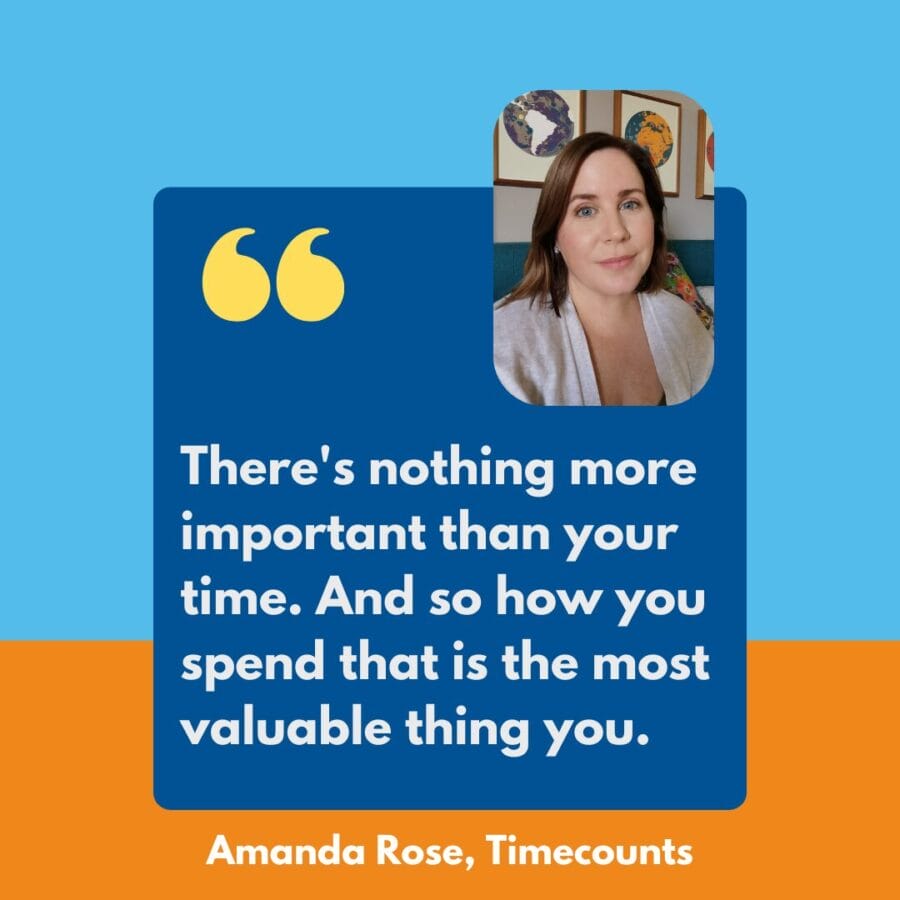
April 22, 2024
By Michelle Welk, Marketing and Communications
Listen to this week’s Hooray for Monday Podcast episode for a conversation between Aleta Margolis, Founder and President, and Amanda Rose, founder of Timecounts and thought-leader on all things volunteer. Amanda shares insight into encouraging students to find meaningful opportunities for volunteering — and to start community service hours early!
This week is National Volunteer Week, a time when volunteers are recognized for their contribution and organizations are encouraged to inspire volunteerism in their communities. So, what does that mean for your classroom? Maybe it doesn’t mean much — but it definitely should!
Research shows there are numerous benefits to volunteering. The time and skills we offer to the organizations we volunteer with help further causes we care about. It makes us happier. It makes us healthier. It helps us connect with one another and ourselves, something more than a third of volunteers seek. And connection is critical; at Inspired Teaching, we consistently highlight the importance of school connectedness and its positive impact on the wellbeing of students, teachers, and the larger school community.
These benefits explain why so many of us volunteer so much of our time: more than 60 million Americans formally volunteered between 2020 and 2021, according to the US Census Bureau, generating nearly $123B in economic value. Volunteering is a net-positive for all involved.
And yet, many teachers, school leaders, and other educators are likely shaking their heads as they read this, as their experience with volunteers – recruiting them, retaining them, putting them to effective use – doesn’t align with the research. When it comes to engaging parents in classroom or school-wide volunteer opportunities, it can feel like an uphill battle.
Full disclosure: I am a delinquent classroom volunteer.
My son currently attends a preschool that regularly offers ways to connect and contribute. Parents are invited to join coffee meetups on the building’s scenic rooftop, chaperone field trips to the neighborhood library branch, or help in organizing the space during classroom clean-ups. I … have not yet taken part in any of these opportunities. Sometimes it’s because I truly can’t – I’m a working mom, after all – but often, it’s because I choose not to. I’ve been burned in the past volunteering elsewhere, finding myself standing around aimlessly, waiting for direction while my brain rattles off the other, more efficient ways I could spend my time.
And I am not alone in my wariness about volunteering at school. What, then, can schools do to better engage parents like me and showcase the very real rewards for us, our children, and the adults in their schools, of volunteering in the school community?
This wouldn’t be Hooray For Monday if we didn’t have actionable insights and expert advice for doing just that!
Aleta recently spoke with Amanda Rose, founder and president of volunteer management platform Timecounts, and thought leader on all things volunteer-related. Amanda offered several straightforward tips any school leader or teacher can use to encourage parents to take an active, authentic role in the school community. That advice is summarized below.
I encourage you to listen to their conversation on this week’s Hooray For Monday podcast episode below for additional advice for teachers — and parents — from Amanda.
|
Reframe the ask “If I could come up with another word for volunteering, I would,” Amanda says. Instead, she lands on “experience” as a stand-in, emphasizing that the activity of the day is just a starting point that could lead to new skills, new friends, or other outcomes beyond completion of the task at hand. “There’s nothing more exciting than feeling part of something bigger.” Connect the work you’re asking parents to do with larger stories about their child’s education and experience in your classroom. Reframe your quarterly clean-up as a showcase of students’ projects from the last few months and a preview of the learning to come. Chaperoning is an opportunity to connect with local community organizations and learn about their family programming. |
|
Be open-minded How many parents play a musical instrument, can teach a short language lesson, paint, sing, dance, are a photographer, wrote a book, or have some other skill set they bring to the table? While the practical chores of a classroom always need doing, there is great benefit to offering space to tap into the unique abilities of the parents in your community. Not only does this create fun learning opportunities for your students, but you also show parents that you value and celebrate their contributions. This may also help parents with similar interests or backgrounds find and connect with one another. Amanda shared her experience with the power of discovering opportunities to give back that align with your passions and interests: “I really hope that [volunteering] moves in a direction where people aren’t ‘checking the box’ because it can be wildly impactful. I was very artistici when I was younger [so], every summer, I did face painting for the Rotary Club. I would buy some face paint and I would rope in a bunch of my friends. And it was fun, but it was volunteering and I ended up winning awards.” |
|
Clear communication is key From the initial request (“Help us clean our classroom!”) to the assigned tasks (“You’re on Windex duty!”), your relationship with your parent volunteers depends heavily on communication, and the more explicit and frequent, the better. As mentioned, the primary source of my aversion to volunteering at my son’s school is a fear that I will clear my schedule only to find that my time is essentially wasted because I lack any clear direction. A specific ask and thorough instructions on-site are two easy steps that go a long way in setting and managing expectations. “It’s not rocket science, but you do need to think about it,” Amanda advises when working with organizations unsure of how to manage their volunteers. “You have to think about the experience that the volunteer is going to have. And that starts the moment they first interact with you.” |
|
Share outcomes An important part of building that connection mentioned above is including volunteers in the process. Ask for (and implement!) their feedback about the volunteering experience. And bring things full circle; let volunteers know how their efforts moved the needle. Did the auction prize basket they organized fund new art supplies? Were your students still sharing fun facts for weeks after the field trip the parent chaperoned? As Amanda noted, “I think there’s nothing worse than feeling like you did something, and you just feel like you were plunking in your card: checking in, checking out.” |
For additional insights, resources, and information on Inspired Teaching teacher and youth programming, subscribe to the Hooray For Monday newsletter!


